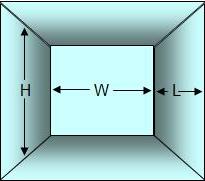
Figure 4 - Measuring room to determine CFM requirements
There are numerous ways to overcome or at least reduce the potential problems of lack of makeup air.
Do not oversize the exhaust fan.
There are two factors that determine the correct size of the exhaust fan:
- CFM (cubic feet per minute) of exhaust air flow needed.
- Determine the cubic feet (CF) within the kitchen = L x W x H = 9 x 10 x 8 = 720 CF
- Multiply the CF by the recommended air changes per hour (ACH) for a kitchen (which is 15) = 720 x 15 = 10,800
- Divide that number by 60 for minutes = 10,800 ÷ 60 = 180 CFM
- EDL (equivalent duct length) this number confirms that the exhaust fan can move the CFM of exhausted air through the ducts to the outside and is basically the back pressure that the fan will see when trying to exhaust air.
Example calculation to determine the CFM required for a kitchen exhaust fan:
For this example (Figure 4) we will assume a kitchen that is 9 feet wide (W), 10 feet long (L) with a ceiling height (H) of 8 eight.
In our example the recommended size of the exhaust fan for this kitchen would be 180 CFM
Table 1 gives some kitchen sizes and the exhaust fan CFM required.
Each part of the exhaust fan ducting system creates a resistance to the air flow. The amount of the resistance is based on the vent duct material and the shape of the piece of ducting as detailed in Table 2.
| Table 2 - EDL Numbers For Vent Duct Parts | |||
| Duct Diameter | |||
| 4" | 6" | ||
Duct |
Smooth Metal |
Measured Duct length |
|
Material |
Flex Aluminum |
1.25 X Duct Length |
1.5 X Duct Length |
Insulated Flex |
1.5 X Duct Length |
2 X Duct Length |
|
Termination |
Wall Cap |
30 Feet |
40 Feet |
Roof Cap |
30 Feet |
40 Feet |
Elbow |
Adjustable |
15 Feet |
20 Feet |
Example calculation to determine the EDL of a kitchen exhaust fan:
For this example we will assume a duct diameter of 6 inches, duct length of 8 feet, duct material is flexible aluminum, the duct is vented through the roof, and we needed 2 adjustable elbows in the system. See Table 3.
| Table 3 - EDL Calculation Example | |||
| Item | Qty/Length | Material Factor | Amount |
6 Inch Flex Aluminum Duct |
8 feet |
1.5 |
12 |
Roof Vent Cap |
1 |
40 |
40 |
Adjustable Elbow |
2 |
20 |
40 |
Total EDL |
92 | ||
Once the CFM and EDL are known you can look at a the performance graph of exhaust fans in order to choose a model that will operate with your parameters (180 CFM and an EDL.
Sample exhaust fan performance graph.
Ensure that when operating the exhaust fan that there is someway for makeup air to enter the home, that is not going to create a potential safety hazard. This can be done by cracking open a kitchen window or door.
If your budget can accept the additional cost, have a vent pipe to the outside installed with an electrically controlled damper as shown in Figure 2. When the kitchen exhaust fan is turned on, the electrically controlled damper opens and allows makeup air to enter the home.
It should be noted, that fireplaces that have glass doors, do not provide any method for makeup air to enter the home, even if the fireplace is not on.
An exhaust fan rated at 400 CFM, a common rating for kitchen exhaust fans, can cause a backdraft to occur.
Additional information on Kitchen Exhaust Fans & Hoods
Additional information on Exhaust Fan Noise
